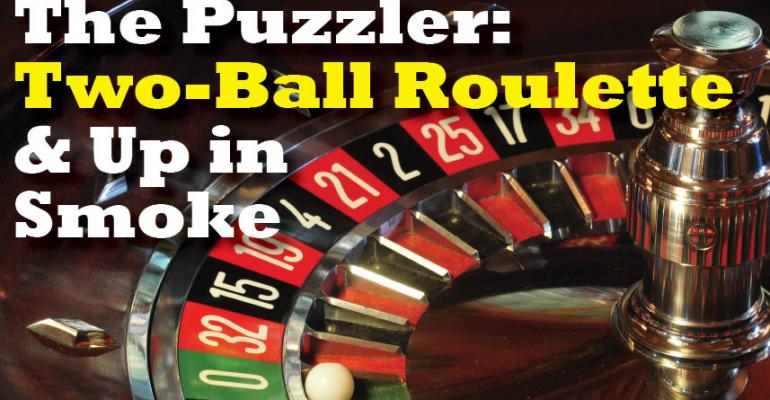This Month's Contest:
TWO-BALL ROULETTE
You're playing on a roulette wheel with thirty-eight slots. The probability of the ball dropping into a particular slot is one out of 38, right? But what if two balls are released at once? Assuming that the slots can easily accommodate two balls, what's the probability of both balls dropping into the same slot together?
Please email your solution to John Kador at [email protected] using the subject line “Roulette.” Deadline is Aug. 26, 2011. One entrant will be selected to receive a signed copy of John Kador's How to Ace the Brainteaser Job Interview. Good luck.
Brainteaser #2:
UP IN SMOKE
This puzzle is based on a real incident from the 1970s. Owners of cigarette vending machines were alarmed because the machines were being cheated. The amount of coins in the machines was much less than the number of dispensed product required. What was perplexing was that there was absolutely no evidence of tampering, damage, breakage, or other obvious attacks on the vending machines. The only thing out of the ordinary was that there was usually a small pool of water in the internal coin drawer or underneath the robbed machines. What was happening? (Solution below.)
SOLUTION TO PREVIOUS PUZZLER: WEIGHING THE COINS
To recap: You have seven stacks of coins, each with 100 coins. Authentic coins weigh 10 grams each; counterfeit coins weigh 11 grams each. Each stack contains only real or phony coins. You have a scale. What is the smallest number of weighings that can be used to tell how many stacks are made of real coins and how many are made of phony coins?
Solution: It can be done with one weighing. The strategy is to place on the scale one coin from the first stack, two coins from the second stack, four coins from the third stack, eight coins from the fourth stack, 16 coins from the fifth stack, 32 coins from the sixth stack, and 64 coins from the seventh stack. There are now 127 coins on the scale. If all the stacks were authentic, the scale would read 1,270 grams. Every combination of real and phony stacks yields a unique weight. For example, if the scale reads 1,622 grams (352 grams over), you know that 32 coins are counterfeit (352/11= 32) and that stack six (the one with 32 coins) is the lone counterfeit stack. If the scale reads 1,347 grams (77 grams over), you can deduce that seven coins are counterfeit, which means that the seven coins from stacks one (one coin), two (two coins), and three (four coins) are bogus.
We received over 75 entries with most getting it right. This month's winner, selected randomly from all correct responses, is John Welker of Wells Fargo Advisors, Mesa, Ariz. Congratulations.
SOLUTION TO UP IN SMOKE: This actually happened in Camden, England in the early 1970s. At the time, cigarette vending machines did not weigh coins but relied on simply measuring the shape and diameter of the coins. The machines were cheated by some industrious crooks who figured out how to make slugs out of ice by creating simple clay molds. All they had to do was insert the money-shaped ice coins, and the machines dispensed product. Of course, the ice coins then melted in the coin drawer of the vending machines and occasionally left a tell-tale pool of water on the floor.
John Kador is the author of 10 books. His latest book is Effective Apology: Mending Fences, Building Bridges, and Restoring Trust (Berrett-Koehler). www.effectiveapology.com






